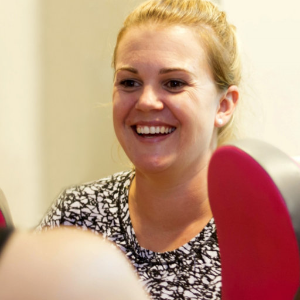Title : Positive benefits of group-based exercise for adolescent and young adult cancer survivors; a digital multimedia presentation of the patient experience in their own words.
Abstract:
Adolescents and young adults (AYAs) often experience a myriad of acute and chronic toxicities as a result of cancer treatment. In survivorship, this can significantly impact AYAs’ physical and psychosocial functioning and quality of life (QOL). Initially this presentation will share patient insights into the vast impacts a cancer diagnosis and its treatment has on this population. Additionally, it will report both the objective results alongside the patient voice to demonstrate the physical and psychosocial benefits of group-based exercise in AYA cancer survivors. To date, One hundred and ten AYAs have enrolled in 12-week group-based exercise programs that were delivered in a community setting. Participants completed pre and post intervention assessments of physical (1RM strength, grip strength, VO2 peak, push ups and sit ups) and psychosocial measures. Following the intervention, participants were invited to share their experience of the program via video or audio recording. Ninety-one participants have completed the program over a five year period with an overall attendance of 76%. Results have demonstrated significant improvements in all 1RM strength measures, push ups and sit ups (p≤0.01). Subjectively reported fatigue, pain, social, emotional, role and physical functioning quality of life variables also improved significantly from baseline to post intervention (p≤0.05). No detectable change was evident in VO2 peak over time. Participant interviews revealed the greatest impacts were on psychosocial functioning and group connectedness in this cohort. Collectively these objective results and patient insights have demonstrated that a group-based exercise program is an effective intervention to improve physical fitness, functioning and QOL in AYA cancer survivors. While the greatest objective benefits were evident in strength and functional measures, the patient voices provided perhaps the greatest insight into the magnitude of positive benefits of this program for this cohort. Participants reported that the program resulted in them feeling healthier, happier and more engaged in life, allowing them to lead their lives to their full potential. Additionally, through partnering with consumers and collecting these reflections the program has been shaped to better meet the needs of the patient cohort it is serving.




